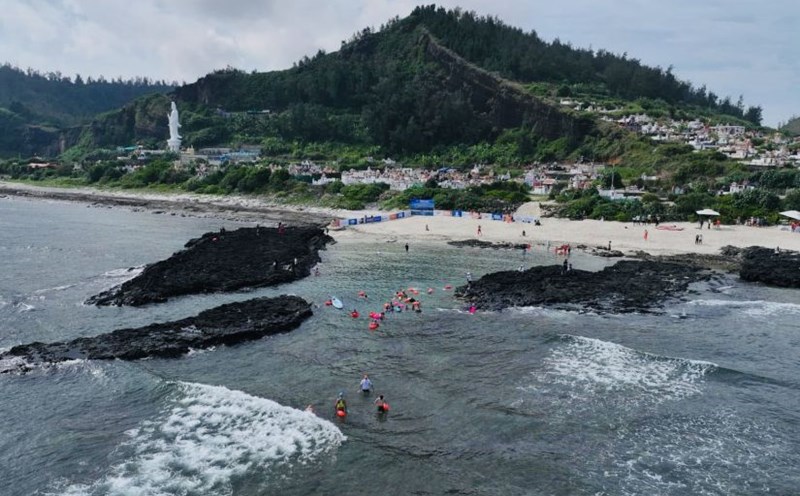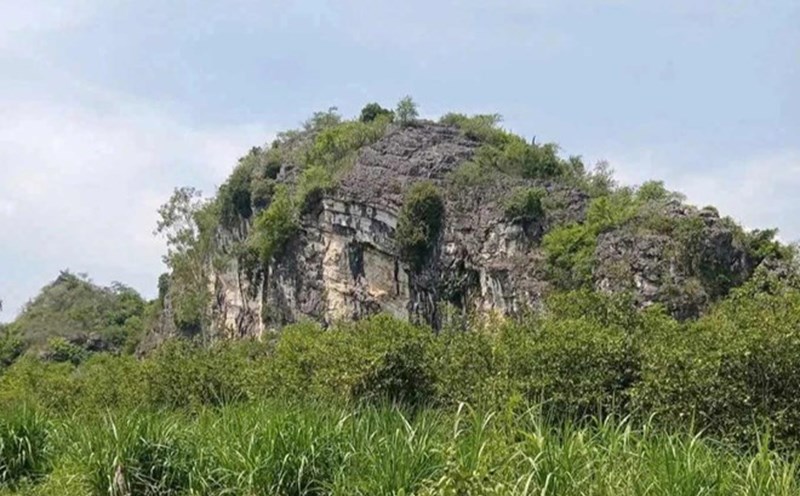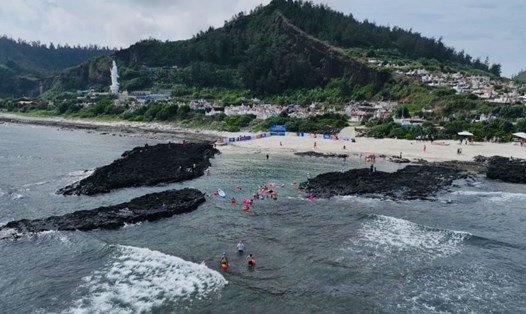Towards the sea and developing tourism
I once heard a friend working in the tourism industry explain why Thanh Hoa is always among the top localities in terms of tourism revenue. That is because this locality has both forests and seas - a great advantage for tourism development.
I would think that in Vietnam, any locality with a sea means being given advantages in tourism development by nature - he said - but there are still many localities, even though they have a sea, that develop tourism at a potential level, because they cannot develop new tourism products.
Therefore, the merger of provinces and cities here is to form larger administrative entities with strong enough potential for sustainable development, while helping inland provinces have the opportunity to "reach out to the big sea" - an advantage that many provinces are currently lacking. This can clearly be seen as an opportunity to connect tourism types and create new products. This is the key to a breakthrough in tourism development".
Vietnam has more than 3,260km of coastline, with hundreds of natural beaches, beautiful bays, islands rich in resources, tropical climate and rich marine culture. However, in recent years, the development of marine tourism has been dispersed, lacking regional connectivity and not fully exploiting the potential due to limitations in administrative boundaries.
Therefore, the merger of some inland provinces - such as Lam Dong, Dak Lak, Gia Lai... with coastal provinces - such as Binh Thuan, Khanh Hoa, Phu Yen... will open up new space for marine tourism to connect with ecological products, agriculture, and indigenous culture.
One of the weaknesses of Vietnam's sea tourism today is the lack of connectivity between tourism regions. The merger of provinces opens up opportunities to form comprehensive tourism clusters - where mountains, forests, islands, urban areas and rural areas can be exploited simultaneously - thanks to infrastructure connection, policy synchronization and promotion coordination.
For example, Kon Tum merging with Quang Ngai (a new province named Quang Ngai) shows Kon Tum's tourism advantage when "going to sea". This is the northernmost province of the Central Highlands, notable for its pristine landscape, ethnic minority culture, Dak Bla river, wooden church, Kon Klor, Ngoc Linh primeval forest...
Meanwhile, Quang Ngai has a long coastline, with outstanding destinations such as My Khe beach, Ly Son island, Son My relic site... This combination creates a chain of "The Great Highlands - The wild sea of islands", attracting tourists who love to explore and experience culture - nature.
Regarding transportation, tourists can more easily access Kon Tum through seaports and Chu Lai/Quang Ngai airport, shortening travel time. The 3-4 day tour can combine the Central Highlands gong, barge house, Pa Sy waterfall, Ly Son seafood village, ancient fishing village, and the golden blue sea.
Another case is Gia Lai tourism taking off with Quy Nhon sea. Gia Lai has the Sea of Ho, Phu Cuong Waterfall, rubber forests, gong festivals, Pleiku mountain town; while Binh Dinh is a sea tourism paradise with Ky Co, Eo Gio, Ghenh Rang, and a place to preserve the traditional martial arts spirit, the canal, and Cham tower. Visitors can experience the "Dat Vo - Dai Da" tour starting from Quy Nhon - An Khe - Pleiku - Bien Ho, stretching from the sea to the mountains, from cultural heritage to majestic nature. Phu Cat Airport (Binh Dinh) can act as an "international gateway" for Gia Lai tourism, shortening the distance to Korean and Japanese visitors - markets that are favorites of nature and indigenous culture.
Meanwhile, the Lam Dong - Dak Nong - Binh Thuan merger will shape a chain of international-class "forests - seas": Tour "Da Lat - Dak Nong - Mui Ne" with a cool climate, combining relaxation, exploring nature, ending with swimming in the sea in just 4-5 days.
At a recent workshop, Mr. Nguyen Tien Dat - Chairman of the Hanoi Tourism Association - commented: "Tourism space will be more diverse and rich when each locality is no longer bound by a narrow administrative scope. This allows the organization of inter-provincial - inter-regional tours easily, reducing management costs and improving promotional efficiency".
Sea tourism is not only associated with resorts but also promotes logistics services, sea trade, and cruise ship tourism - a young field in Vietnam. The merger of provinces creates conditions for the formation of regional marine tourism centers, capable of welcoming large groups of visitors and international cruise ships.
Larger administrative space and synchronous regional planning will be the foundation for coastal provinces to build strategies for developing green, sustainable tourism and adapting to climate change.
Instead of developing fragile and uncontrolled marine tourism, overall planning in a large province after the merger will help control the marine environment better, develop environmentally friendly infrastructure, protect mangrove forests, and exploit beaches with control.
On the other hand, the provinces after the merger can integrate land funds, marine resources and human resources to form large-scale tourist areas, according to the "all-in-one" model (all in one): relaxation, entertainment, sea sports, cuisine, culture, ecology.
The connection between the sea and mountainous areas - such as the Central Highlands and the Central Coast - will help restructure the tourism product chain: From Buon Ma Thuot coffee to Phu Yen lobster, from the Central Highlands village to Nha Trang beach, creating "super tours" with clear Vietnamese identity.
Green tourism - the key to success
To maximize the advantages of the provincial merger, the role of tourism businesses and local communities is a decisive factor. Businesses need to quickly update information, adjust tour products, promotional maps and tour guides.
At the same time, people in coastal localities - especially fishermen, owners of accommodation establishments, tourism service businesses - need to be propagandized, trained and supported with policies to adapt to the new tourism space. Close coordination between government - businesses - people will help the administrative transition go smoothly, without disruption in tourism activities.
Merging provinces and cities is an inevitable step in the process of reforming the national administrative apparatus. If implemented scientifically, flexibly and synchronously, this policy will not only contribute to streamlining the apparatus and saving costs, but also be a golden opportunity to develop marine tourism - a potential green economic sector of Vietnam.
Green tourism is no longer an option, but an inevitable requirement in sustainable development. However, to form a comprehensive green tourism ecosystem, more long-term plans and practical actions are needed.
First of all, it is necessary to complete the national criteria for green tourism for each type of accommodation, destination, travel, transportation... This is the basis for businesses to invest in the right direction, and the management agency to monitor effectively.
Financial and technical support is needed for green transformation models, especially in remote areas. Individual units participating in green tourism hope to have preferential credit policies, support funds, or public-private partnership programs to encourage green initiatives from the community.
Along with the arrangement and merger of provinces and cities, localities and businesses need to make recommendations and solutions on investment in human resource training and propaganda to raise tourist awareness, linking green tourism with cultural and social development with homestay models, farms, traditional craft villages, folk festivals... creating green tourism connections, creating new and unique tourism products.
Green tourism not only enhances the experience for tourists but also helps preserve cultural identity, create jobs and retain indigenous people in the homeland.
From expanding space, strong regional linkages, synchronous infrastructure to sustainable development strategies - all are the foundations for Vietnam's marine tourism to break through, reaching out to the region and the world in the near future.











